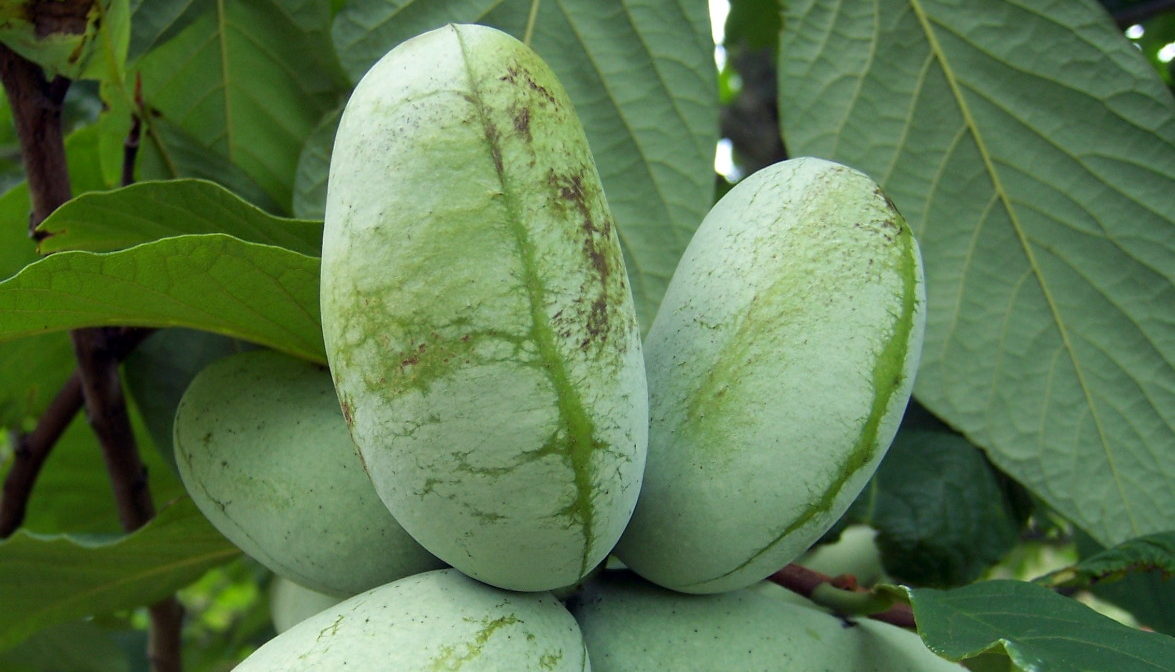Have you ever tasted pawpaw? This tree, Asimina triloba, is a species in the plant family Annonaceae. Pawpaw is a fruit tree native to North America, growing wild in 26 states, mostly east of the Mississippi. It may be best known and loved in the Mountain South, where stands of trees produce fruit that weigh between 5 and 16 ounces. They are considered the largest edible fruits indigenous to the continental United States and the largest tree fruit in North America.
The National Park Service National Capital Region Network found that the pawpaw is the most common sapling species in C&O Canal (CHOH), GW Memorial Parkway (GWMP), Harpers Ferry (HAFE), and National Capital Parks – East (NACE), and ranks as the second most common sapling species at Antietam (ANTI), and Monocacy (MONO).
In recent years, pawpaw trees have become a gardener’s favorite across the Southeast because of their dark green foliage, tropical appearance, and abundant fruit. Their tropical characteristics make them seem like they would be happier closer to the equator, but pawpaw trees thrive in the South’s temperate climates and deciduous forests. They can be a source of seasonal color, with leaves that turn bright yellow in autumn. Their brown, velvety flower buds open to deep burgundy flowers from March to May. For most fans of this fruit, part of the pleasure is in the thrill of the hunt for free pawpaws in the wild. This earned the pawpaw the nickname “poor man’s banana”.
According to Kentucky State University’s Cooperative Extension Program, pawpaws are sky high in vitamin C, magnesium, iron, copper, and manganese. They are also a good source of potassium and several essential amino acids, and they contain significant amounts of riboflavin, niacin, calcium, phosphorus, and zinc. Pawpaws contain these nutrients in amounts that are about the same as or greater than those found in bananas, apples, or oranges.
Once the custard-like flesh is separated from the large black seeds, a bite of pawpaw might trigger tropical fruit flavor flashbacks. They are described as tasting like a combination of banana, pineapple, and mango. The exotic flavor and creamy texture of pawpaw makes it a star in jelly and jams, as well as a darling among bakers, who use the pureed flesh in pies and tarts. The pawpaw is also known as custard apples because of the creamy texture and appearance similar to the apple.
A bit of caution, if you have never eaten them before, try a small amount first to make sure you can tolerate it, the high fiber in pawpaw can cause nausea and digestive problems, and possibly hives, headache, and faintness. Never eat the skin of the pawpaw.
The pawpaw fruit season is short (end of the summer), which means that one must be in the right place at the right time to eat them. In season, pawpaws can be purchased at local farmers’ markets or on farms. You can also try to find them in the forests of the area, where you will be able to smell the sweet aroma of the fruits while you hike or bike. However, be sure to check property rules; harvesting plant materials from park lands is typically prohibited.
Register on our website for the September 15th White’s Ferry Pawpaw Pop-Up Walk on the C&O Canal with Jon Wolz, a volunteer level walker with the C&O Canal Association (COCA).

